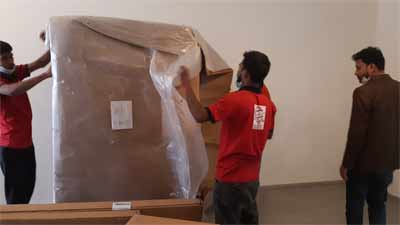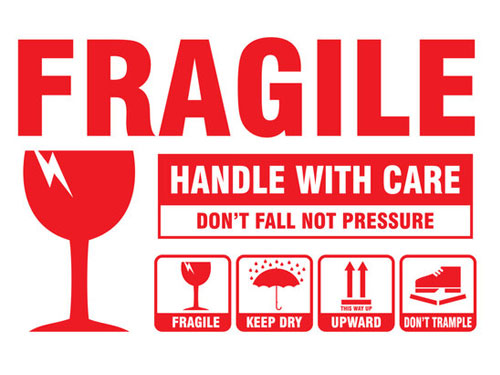Expert Fragile Item Move
Fragile Item Move: Moving fragile items, whether they’re invaluable family heirlooms, delicate electronics, or fine art, requires a nuanced approach that combines meticulous planning, appropriate packing materials, and precise handling techniques. Such items are not only financially valuable but often hold irreplaceable sentimental value, making their safe transport a high priority. Fragile Item Move. This comprehensive guide will explore strategies and best practices for ensuring the secure relocation of fragile items, focusing on pre-move preparation, packing techniques, transportation considerations, and post-move care.

Pre-Move Preparation: The Blueprint for Success
Inventory and Assessment
- Begin with a thorough inventory of the items to be moved. This step involves assessing each item’s vulnerability, dimensions, and special requirements for transport. Knowing what you have is crucial for determining the amount and type of packing materials needed and the best mode of transport.
Acquiring High-Quality Packing Materials
- Invest in quality packing materials. Standard items include bubble wrap, packing paper, sturdy boxes of various sizes, packing tape, and specialized containers like mirror boxes or dish packs. For extremely delicate items, consider custom crating solutions.
Insurance and Documentation
- Ensure your items are adequately insured. This may involve updating your current policy or purchasing additional moving insurance. Fragile Item Move. Take photos and document the condition of each item before packing as a reference for insurance purposes.
Packing Techniques: The Art of Protecting Fragile Items
Wrapping Individual Items
- Each fragile item should be individually wrapped with bubble wrap or packing paper. For extra protection, items can be double-wrapped or encased in foam padding. Fragile Item Move, Ensure that the wrapping material snugly envelops the item to prevent movement.
Box Selection and Packing
- Choose boxes that are slightly larger than the items to allow for sufficient cushioning material on all sides. Heavier items should go into smaller boxes to make them easier to carry, and lighter items can be placed in larger boxes.
Layering and Cushioning
- The bottom of each box should have a layer of cushioning material—bubble wrap, crumpled packing paper, or foam peanuts. After placing the wrapped item in the box, fill any empty spaces with additional cushioning materials to prevent movement. Fragile Item Move.
Specialized Packing for Unique Items
- Some items may require special packing techniques:
- Glassware and Stemware: Each piece should be individually wrapped, with extra padding around stems and delicate features. Consider using cardboard dividers in the box to separate and protect each piece.
- Artwork: Wrap canvases in acid-free paper before adding bubble wrap. Use mirror boxes for added protection and clearly label the boxes as fragile.
- Electronics: Original packaging is ideal for electronics. If not available, wrap items in anti-static bubble wrap and secure them in boxes with ample cushioning.
Transportation Considerations: Safe Transit Strategies
Choosing the Right Movers
- If hiring professional movers, select a company with experience in handling fragile items. Discuss your specific needs and ensure they offer the appropriate services, such as custom crating and climate-controlled transport.
Vehicle Preparation and Loading
- For those moving items personally, ensure the vehicle’s interior is clean and free of any debris that could damage the cargo. Load the most fragile items last, Fragile Item Move, so they can be unloaded first, and ensure they are securely positioned to prevent shifting during transport.
Driving and Handling
- When transporting fragile items, drive smoothly and avoid sudden stops or sharp turns. Be mindful during loading and unloading; these are moments when items are most susceptible to damage.
Post-Move Care: Unpacking and Placement
Unpacking with Caution
- Unpack fragile items slowly and carefully, removing the outer layers of packing materials until the item is fully exposed. Keep a record of any damage and report this to your insurance company as soon as possible.
Placement and Assembly
- Before placing items in their new location, ensure the space is prepared and clean. For items requiring assembly, carefully follow any instructions, and don’t rush the process.
Safety First: Protecting Both the Items and Yourself
Throughout the packing, moving, and unpacking process, prioritize safety—for both the fragile items and yourself. Use proper lifting techniques to avoid personal injury, and wear protective gloves when handling items with sharp edges or glass.
In Conclusion
Moving fragile items successfully hinges on detailed preparation, the right materials, careful handling, and thoughtful unpacking. By taking a strategic and cautious approach, you can significantly reduce the risk of damage to your most delicate and valued possessions, ensuring they arrive at their destination in the same condition as when they left. Whether you’re a professional mover or a homeowner facing the daunting task of transporting fragile items, adherence to these principles will pave the way for a smooth, secure move.


